Washington Hall in Wheeling, Virginia, was the site of the antisecession convention known as the First Wheeling Convention held May 13–15, 1861. After Virginians voted to secede from the Union, the Second Wheeling Convention was held in June 1861 at the Custom House in Wheeling. Delegates called for the reorganization of the state government which remained loyal to the Union during the Civil War. Delegates convened again in August 1861 and approved an ordinance to form a new state—West Virginia.
“We … imperatively demand the reorganization of the government of the Commonwealth [of Virginia], and that all acts of said [Secession] Convention and Executive, tending to separate this Commonwealth from the United States, … are without authority and void …” — Excerpt from “A Declaration of the People of Virginia”
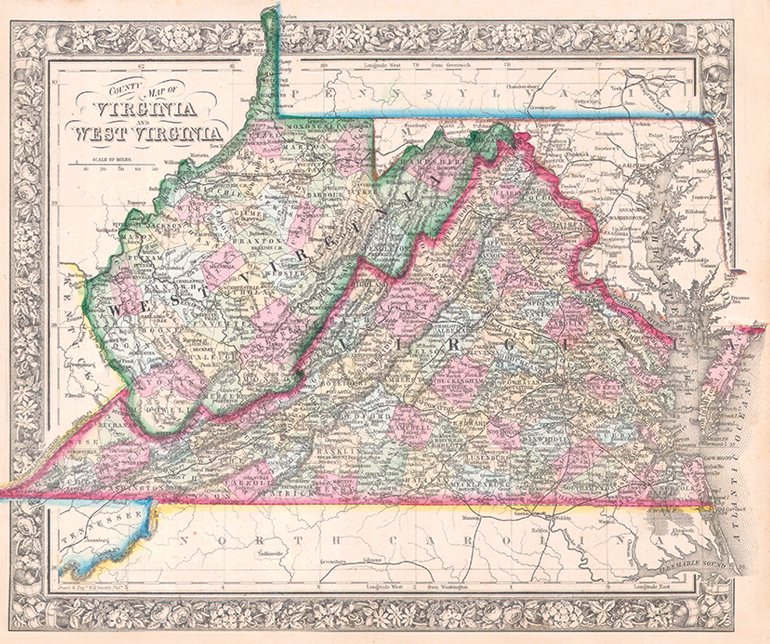
This 1864 map of Virginia, West Virginia and Maryland was revised version of S. A. Mitchell Jr.’s 1860 map of the same region to accommodate for the separation of Virginia and West Virginia in 1862. Following the Civil War, Harpers Ferry, along with all of both Berkeley and Jefferson Counties, was separated from Virginia and incorporated into West Virginia, creating the West Virginia panhandle.

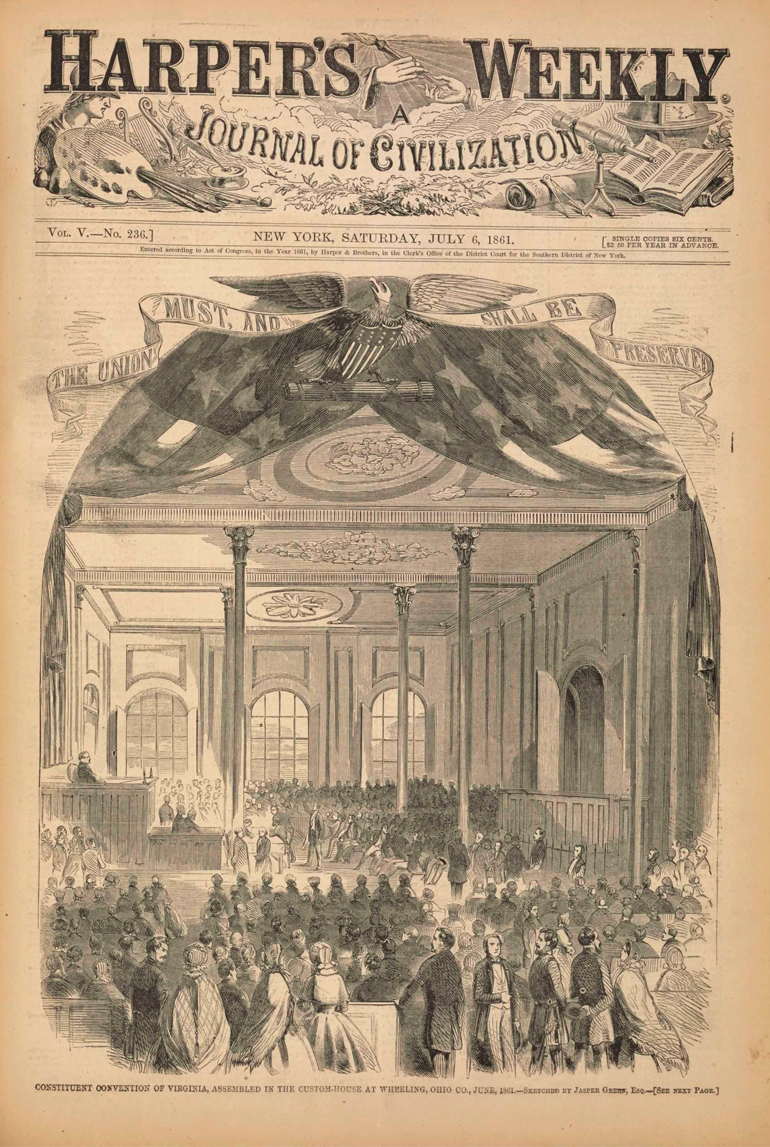
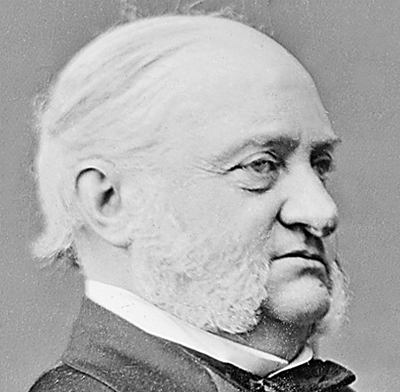
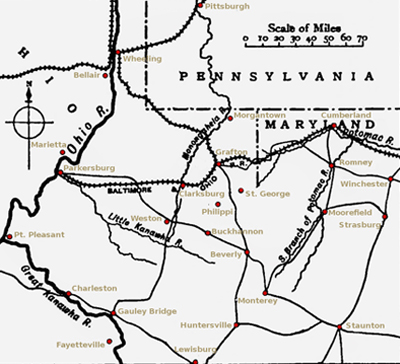
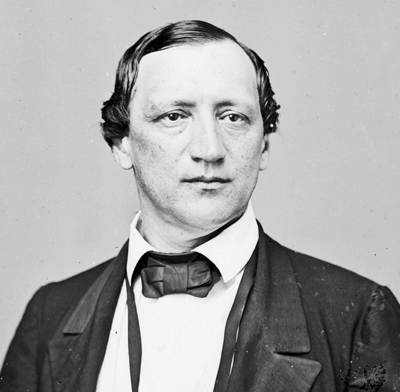
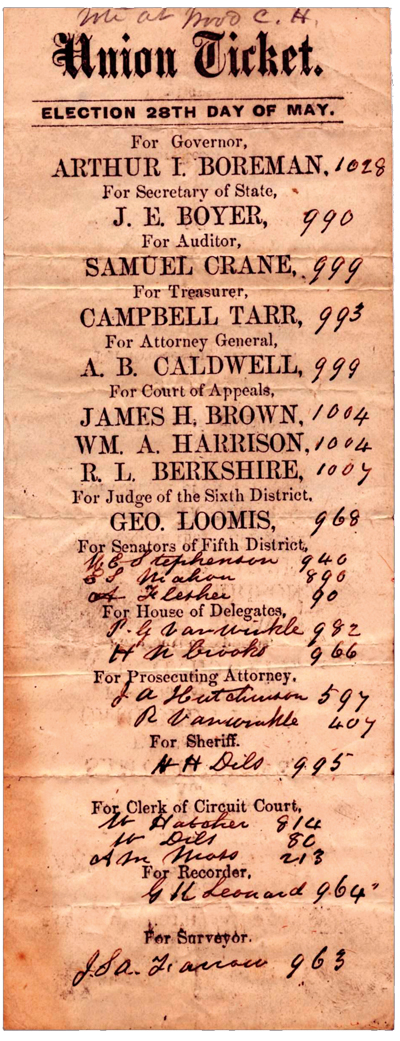
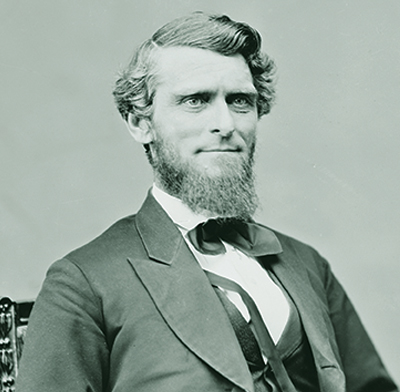
The Restored Government of Virginia
The Restored Government of Virginia was the Unionist government of Virginia during the Civil War that opposed the government which had approved Virginia’s secession. Francis Harrison Pierpont became governor of the Restored Government of Virginia—a position he held throughout the Civil War. Following the war, Pierpoint was named governor of Virginia during the first years of Reconstruction, serving from 1865–1868. Wheeling served as the headquarters of the Restored Government of Virginia, until West Virginia was admitted to the Union. Pierpont then moved the headquarters to Alexandria. Following the war, the state government of Virginia was relocated to Richmond.
Convincing the President
President Abraham Lincoln sought the advice of his cabinet about the issue of creating the new state of West Virginia. After Congress approved the statehood bill authorizing West Virginia to join the Union, it was then sent to Lincoln for his signature of approval. Congressman Jacob Beeson Blair, a Parkersburg native, met with the president for several hours on December 31, 1862 to convince Lincoln to sign the bill. Blair went to the White House the next morning to get the president’s answer and was informed of Lincoln’s approval.
President Abraham Lincoln wrote this proclamation on April 20, 1863 stating that West Virginia would become a new state within 60 days, pending changes to the original draft of the state constitution.
The Path to Statehood
West Virginia did not become a state overnight. The people of western Virginia had grown angry because of lawmakers’ inattention to their pleas for improvements to transportation infrastructure and access to public education. A series of events led to the split from Virginia.